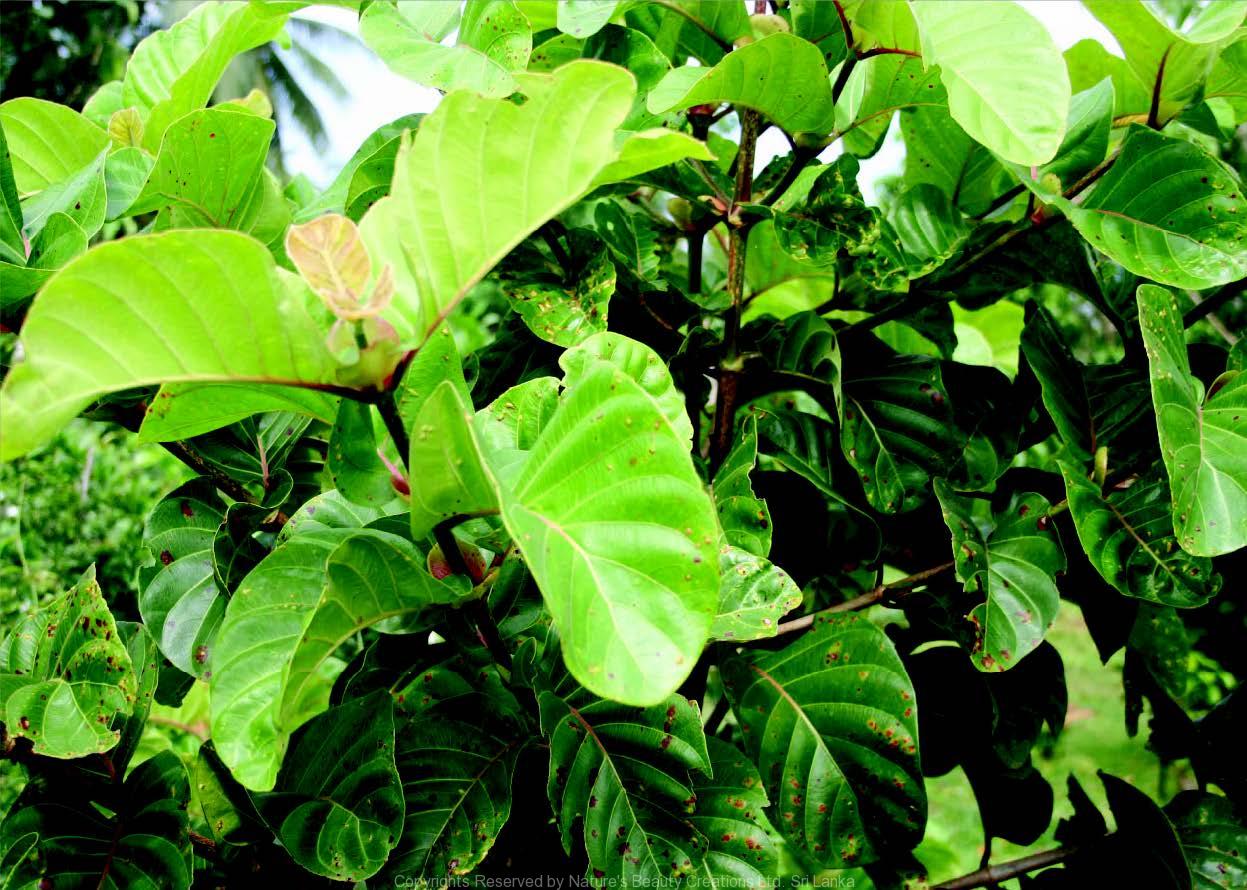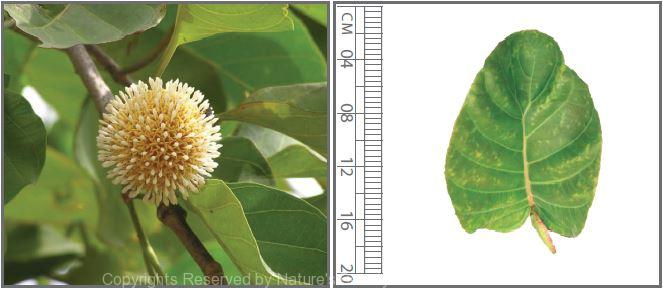

Traditional Knowledge
Useful plant parts :
Leaf and fruit
Uses in traditional medicine :
- Crushed young leaves are applied on boils in the skin
- Ripe fruits are taken for gastric ulcers
- Act as an antipyretic, vulnerary and an antidiarrhoeic
- Used to treat tumours and toothache
Scientific Research
Chemical constituents:
Alkaloids: naucleaorals A and B, strictosidine lactam, nauclealines A and B, naucleosides A and B, terpene glucosides: naucleaorine, epimethoxynaucleaorine, terpenes: ursoic acid and its esters, oleanolic acid, alkaloid glycosides: strictosamide, vincosamide, pumiloside from root, stem and bark
Bioactivity :
Ethanol extract of leaves: antioxidative, anthelmintic; naucleaoral A: cytotoxic to human cervical carcinoma cell lines; naucleaorine and epimethoxynaucleaorine: antimalarial
Clinical:
References : Hea, Z. D. et al., (2005), Antimalarial Constituents from Nauclea orientalis (L.) L., Chemistry & Biodiversity, 2, 1378-1386. Raghavamma, S. T. V. et al., (2011), In vitro antioxidant potential of crude extract from leaves of Nauclea orientalis Linn., Journal of Pharmacy Research, 4(5), 1548-1549. Raghavamma, S. T. and Rao, N. R., (2010), In vitro Evaluation of Anthelmintic Activity of Nauclea orientalis Leaves, Indian J Pharm Sci, 72(4), 520-1. Sichaem, J. et al., (2010), Two new cytotoxic isomeric indole alkaloids from the roots of Nauclea orientalis, Fitoterapia, 81, 830–833. Zhang, Z. et al., New indole alkaloids from the bark of Nauclea orientalis, J Nat Prod, 64(8), 1001-5.
Copyrights Reserved By
Natures Beauty Creations



